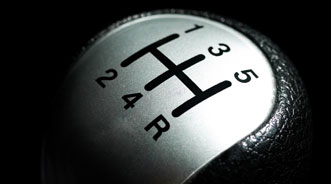BMW & Honda Issue Recalls

As American Honda revealed separate recalls that include more than 85,000 units, the National Highway Traffic Safety Administration reported a BMW recall that could cover more than 200,000 units.
The BMW recall includes 3-Series Sedans from the 2002 to 2005 models years, a cluster that could cover more than 241,000 units. But the automaker believes previous service bulletins associated with this particular defect likely takes the amount of models impacted to below 200,000.
BMW reported to NHTSA that this latest recall initiative, like previous campaigns, is connected with the rear-lamp unit contained within the vehicle’s rear panel.
The automaker explained the material combination of the lamp’s connector and housing can result in an increase of the resistance at the electrical contact points — a situation that can come in combination with aging and environmental influences. BMW acknowledged this development could lead to damage to the ground terminal of the connector.
As a result, BMW and NHTSA think an intermittent or permanent loss of functionality of one or more rear-lamp functions (tail light, brake light, turn signal) within the vehicle’s body panel could occur.
However, the OEM pointed out the vehicle’s trunk panel also contains a rear-lamp unit on a separate circuit and is not affected by conditions stemming from this recall.
“The rear lamp unit in the trunk panel consists of a tail lamp, brake lamp and therefore provides redundancy for these lamp functions,” BMW told NHTSA.
Nonetheless, BMW mentioned that it had started to receive customer complaints and warranty claims as far back as 2004 for these models. After the root cause was determined, the automaker recalled that it issued a service bulletin in December 2006, rectifying some of the potentially effected models.
“The remedy outlined in the bulletin consisted of adding a secondary ground connection in parallel to the primary ground connection to the circuit of the rear lamp in the vehicle’s body panel,” BMW explained to NHTSA.
“Additionally, the eight-pin connector housing was checked and, if necessary, replaced,” the automaker continued.
“BWW believed that issuing this service bulletin was an appropriate response for vehicles experiencing this condition in the field,” the OEM emphasized to NHTSA.
Still, after three separate campaigns, NHTSA asked BMW to recall potentially effected units, even though there are no accidents or injuries related to this issue that either NHTSA or BMW is aware of.
BMW said it plans to complete dealer notification of this recall this month and start notifying owners in October.
“BMW will conduct a voluntary recall campaign to remedy the affected vehicles,” the automaker said.
“The rear lamps in the vehicle’s body panel will be reworked. A secondary ground connection in parallel to the primary ground connection to the circuit of the rear lamps in the vehicle’s body panel will be installed. The rear lamps in the body panel will also be checked for proper functionality,” the company continued.
“If they are not operating properly, then they will be repaired, which could include replacement of the eight-pin connector housing if necessary,” BMW went on to say.
However, the automaker pointed out vehicle owners who had repairs performed prior to Dec. 18, 2009 to rectify this issue are not eligible for reimbursement.
Honda Recalls CR-V, CR-Z Models and Fits
First, American Honda said it will voluntarily recall 80,111 CR-V vehicles from the 2006 model year in the U.S. to replace the power window master switch. Honda acknowledged the design of the power window master switch can allow residue from interior cleaners to accumulate, which can over time with switch use, cause the electrical contacts to degrade and may lead to a fire in the switch.
OEM officials emphasized no injuries or deaths have been reported related to this condition.
Additionally, Honda indicated it will voluntarily recall 5,626 CR-Z vehicles from the 2011 model year in the U.S. that are equipped with manual transmissions to update the software that controls the hybrid electric motor.
In the affected vehicles, when the gasoline engine has stalled with the IMA battery in a very low state of charge and the transmission in gear, the automaker explained it is possible for the electric motor to rotate in the direction opposite to that selected by the transmission.
If this occurs and the driver has not engaged the brakes, officials noted the vehicle may slowly roll in an unexpected direction — such as backward when the transmission is in a forward gear — potentially leading to a crash. Honda pointed out a software update will add further controls to correct the problem.
The company again emphasized no injuries or deaths have been reported related to this condition.
Honda stressed that it is announcing these recalls to encourage all owners of affected vehicles to take their vehicles to an authorized dealer as soon as they receive notification of a recall from Honda. Notification to customers will begin in late this month.
In addition to contacting customers by mail, after late September the automaker stated that owners of these vehicles can determine if their vehicles require repair by going online to www.recalls.honda.com or by calling (800) 999-1009, and selecting option No. 4.
“When Honda identifies concerns of this nature, nothing is more important to the company than fulfilling our obligation and responsibility to alert our customers,” company officials declared.
In related news, Honda Motor Co. officials in Tokyo announced a recall of about 960,000 Fit models produced between October 2005 and October 2009.
However, Honda spokesperson Chris Martin told Auto Remarketing that none of these units are in the U.S. Martin said the majority are in China and Japan or were exported to other continents.
Martin added the Fit’s recall issue is the same as the CR-V — replacing the power window master switch.


